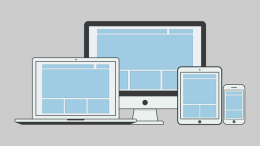Guest author Scott Amyx is the founder and CEO of Amyx+McKinsey, a wearables and IoT (Internet of Things) strategy and execution agency specializing in wearables and IoT strategy and implementation.
With the wearable market projected to heat up to $12.6 billion by 2018, startups may feel tempted to rush in as quickly as possible. All too often, that means taking shortcuts in product design and development.
Although common, the scenario is fraught with problems for hardware makers in this emerging category. The key to bringing a successful gadget to market is careful planning‚ especially for a consumer technology that still struggles to define itself.
For all the potential in wearables, convincing shoppers to invest in wrist tech, smart jewelry, connected fitness accessories and other Internet-enabled devices still isn’t easy. Getting them to take a chance on your particular product, amid a growing sea of rivals, is even tougher. It’s a bitter pill to finally get there and then let them down—or worse, not even entice them to begin with—because you didn’t do your research, or shortchanged development or production.
I discussed these issues and more with Sajid Patel, the CEO of Optimal Design, award-winning research, engineering and design firm. (For the video, scroll down for the embed at the bottom.) He elaborated on some key obstacles to successfully bringing a wearable to market, and the following are his recommendations on how startups can address problems—or better, head them off—to best navigate the challenges.
Research (And Research Again)

Proper planning can help overcome numerous issues, perhaps most importantly, the matter of “technology mismatch”: Your wearable might be based on outdated concepts, or it may simply not meet users’ needs.
See also: 3 Barriers To Success For Wearables
“You need to start doing end-user research, go into the field and find unmet needs and features that could be in the product,” said Patel. You may have performed sufficient initial research when you first designed your product, but technology evolves rapidly (see: Moore’s law), so it’s your product may require ongoing development to support new advancements.
Part of that process involves ongoing evaluation of the market, to see what other types of wearables are on the market now or in development, and then explore ways of improving your product.
There are benefits to extending the research window. “For instance, we discovered that haptic feedback is really the key to the VR experience,” Patel said. “[We found that out] by going into the environment and trying out different haptic [physical vibration] technologies.”
Design, Production, and Sticker Shock

We are inundated with a barrage of futuristic solutions and technologies, which can make it seem like any idea doodled on the back of a napkin is a heartbeat away from market domination. But many times, innovators “don’t know the specifications, but they know what they want,” said Patel.
In other words, startups are often ill-prepared for the process, or the cost, of taking a product from concept to production.
See also: A Flextronics Exec Has Some Advice For Wearable Start-Ups: Scale It Back
The initial design of a device can take months, along with the time needed to create working prototypes. Hunting for the best manufacturing partners can be challenging, and locating the best materials—at the best price point—is key to production success. Straight-forward design and development costs can start in the hundreds of thousands of dollars.
The materials available for the creation of wearable devices, from sharp leather bands to precision-cut stainless steel, form an area ripe for misunderstandings. “You might see some of these materials on an Apple watch, but remember that Apple is getting a volume discount and leveraging their supply chain,” Patel said. “Startups obviously don’t have that advantage, so it’s going to cost more.”
He noted that does not mean that newcomers need to settle; rather, he highlighted the fact that there are a variety of methods and materials that can mimic certain looks without the additional expense.
The Moving Parts
Even with a solid design and working prototype, innovators face hurdles locating the perfect hardware for their device.
A device design can take about three months to complete, but Patel notes that sourcing the components can be an even harder and more involved process. “Startups see the CAD design and they see a complete and perfect-looking product,” he said. “They don’t understand that once the product design is ready, there is actually a whole host of activities that go on to take it to manufacturing.”
Factors such as the size, complexity, and materials play key roles in affecting the timeline for the product.
Measure Twice, Cut Once
In the rush to market, it’s easy to gloss over important aspects, particularly when it comes to addressing problems.
Providing clear, precise specifications for products is vital, as is having a plan for when issues occur (and they will occur). “The manufacturer might change the material they are making the product out of—or they may change a process they are using to assemble it—and that may cause defects,” said Patel.
Successful plans take into account everything, from implementing new research into the design to testing the product to planning for manufacturing. Startups should view the progression of product development as an ongoing conversation that will evolve.
Ready To Manufacture?

Your device is ready to move to the production stage and it looks great. But is it really working the way it should?
Coping with manufacturing issues should be part of your strategy, and Patel emphasized the importance of managing your product with real-world testing: “In-line testing is very important. It catches any areas where the manufacturer—or even the line workers—may have changed the process,” he said.
The manufacturing process has an enormous effect on the product, so maintaining quality is crucial. Production issues aren’t always due to a deliberate changes from the manufacturer. For example, problems in the injection molding process can result in blistering or streaking in materials, which can wreak havoc on a finished product.
Due Diligence
Although wearables are part of the mobile revolution, that doesn’t mean that every mobile manufacturer is capable of creating the exact product you want.
It’s important to assess the capabilities of product development partners, Patel advises. Look into their experience and check “that they actually have a background in that sector (like wearables),” he said. “There are decades of legacy research and development in this space, and it’s not something that someone can just pick up.” Chinese manufacturers are particularly well-positioned, since they have already built a strong infrastructure.
A Final Word
Overall, wearables startups need to plan ahead, Patel urges. You need to keep a finger on the pulse of the process, and have an intimate understanding of their design partner.
“You really have to be conscious of how you do everything,” he said, “from architecting the entire assembly process, down to how you generate the control drawings and control prints, to make sure that the quality checks are in place.
“Dig deep,” Patel added. “Ask for examples of products the company has worked on that are in the marketplace; do your due diligence.”
Challenges are a natural part of any design process. But a well-defined, multi-step process that begins with research and ends with production can help ensure your product will be successful.
https://www.youtube.com/watch?v=3NVDC9LXD_Y
Lead photo by Epic Bets; Mondaine smartwatch courtesy of Mondaine; wearables photo by ReadWrite; Foxconn workers courtesy of Wikimedia Commons

















